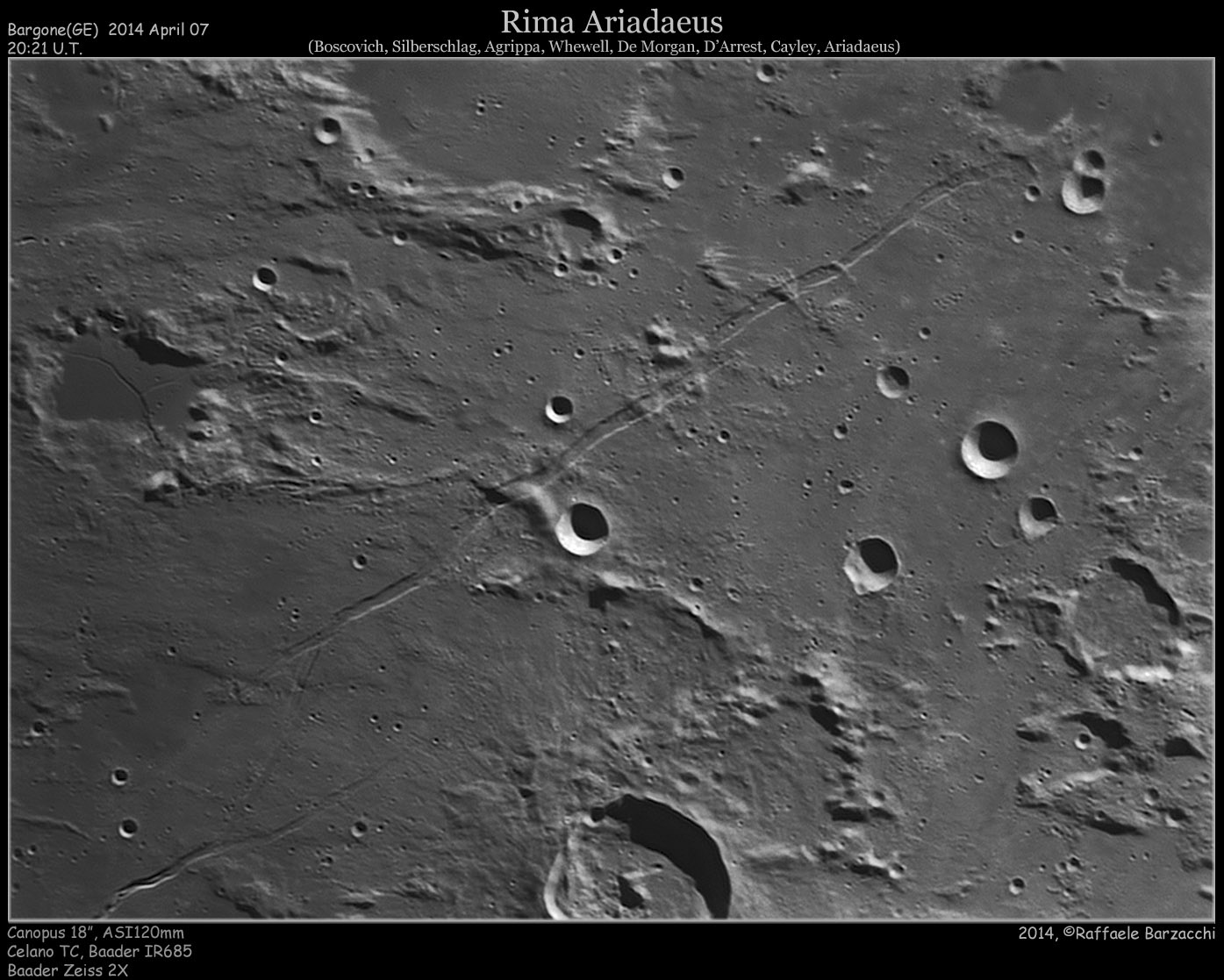June 7, 2014
Rille Slope and Burial

image by Raffaele Barzacchi, Italia
After more than 3000 LPODs most images cover familiar scenes, but I approach each one with anticipation that it may show me something new and lead to new questions and understanding. And Raf's new image doesn't disappoint. The view of the one of the largest lunar linear rilles is spectacular, showing how the parallel faulting with down-dropped floor slices through hill and dale. If you look closely you will see that the rille is wider where it cuts hills - that means that the parallel faults dip outward and thus the rille widens with elevation. You can also calculate where the two parallel faults converge with depth and it is about 2 km. That is also the average depth of the megaregolith, the surface layer of impact pulverized debris. So fractures in the deeper crust are probably narrow until they reach the megaregolith and the reduced strength there allows them to spread. There are two other unusual things to note in this image. At the western end of the Ariadaeus Rille, just after where an older portion of the rille bends to the Hyginus Rille, there is a hint that the main rille continued westward but has been covered. The putative continuation is also the boundary of darker material/lava filling part of what appears to be an older crater. The rille may have a high enough elevation that it stopped the flow of lava southward. Finally, the eastern end of the Hyginus Rille is partly buried by ejecta from Agrippa, but the ejecta flow is more tangential than radial to the crater.
Chuck Wood
Related Links
21st Century Atlas chart XX.
Yesterday's LPOD: Lurking
Tomorrow's LPOD: Monster Trail
COMMENTS?
Register, Log in, and join in the comments.



